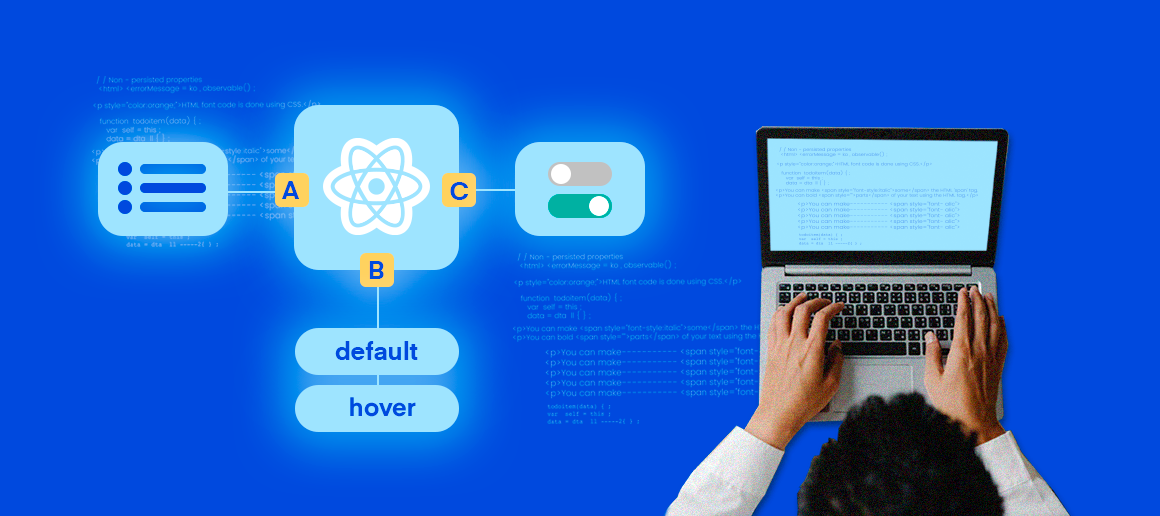Are you diving into new ideas to scale your tech startup or grow your already established company? If so, you might be comparing Golang vs. Rust to see what language would be best to optimize operations.
If so, you’ve come to the right place.
While Go and Rust are not the most commonly used languages, they have grown in popularity, especially among developers looking for high-performance, efficient, and safe alternatives to older languages.
Both languages are, after all, announced in 2009 and 2006, respectively, making them stand out in a room full of languages that have dipped their toes in the past two centuries.
When evaluating Golang vs. Rust thoroughly, it’s clear that the two languages share some similarities. However, when we assessed the languages across six distinct categories, we saw that Rust tends to have more advantages than Go.
Since Rust seems to have more advantages than Go in 2025, we recommend that most people choose this option. Similarly, if you are thinking of learning Rust or Go, you’ll probably find more opportunities with Rust.
This Go vs. Rust side-by-side comparison distinguishes the languages using the following attributes:
- Performance
- Features
- Ease of Development
- Maintenance
- Popularity
- Community
This article will highlight the differences of each language that will ultimately lead you to making the right decision for your tech stack in 2025. Keep reading to find out what they are!
Are you ready to start your development project?
We have the developers you need to take your development project in the right direction.
Companies are proven to grow their business faster with Trio.
Golang vs. Rust: Side-by-Side Comparison
Check out this side-by-side comparison between Golang and Rust. This way, you can make sure you’re getting the best of your desired features from your chosen language.
| Category | Golang (Go) | Rust |
| Performance | Simple with efficient performance, but can struggle with latency due to garbage collection. | Higher performance thanks to fine-grained system resource control and no abstractions |
| Concurrency | Straightforward and lightweight thanks to goroutines. | Powerful concurrency due to the async/await model and additional frameworks. |
| Memory Safety | Garbage collection manages memory but can impact performance. | Memory safety through ownership model with borrowing and lifetimes. |
| Ease of Use | Simple, easy-to-read syntax, beginner-friendly. | Steeper learning curve due to advanced features. |
Golang vs Rust: In-Depth Analysis
Performance
Both Go and Rust hold their performance measures as prized possessions. As relatively new languages in comparison to something like JavaScript, it’s pertinent that they not only perform well but better than the languages that came before them.
A simple benchmark test proves that Rust is faster than Go in a multitude of tasks, especially those that are CPU-intensive.
This is likely due to its fine-grained control over system resources and zero-cost abstractions, meaning that high-level Rust code runs as efficiently as low-level code without performance trade-offs.
Rust also doesn’t rely on garbage collection, which can lead to issues with runtime pauses in Go. Instead, Rust’s ownership model ensures memory is efficiently allocated and freed at compile time. This allows Rust to rival C and C++ in terms of execution speed.
All of this makes Rust the better option for performance-intensive applications like cryptography, game engines, and even real-time systems.
On the other hand, Go is efficient and scalable. Even though garbage collection – which is great for memory management – can introduce latency, Go is better than Rust for networked applications and cloud-based systems, provided that you optimize for runtime.
While it does not provide the same low-level control as Rust, it compensates with an efficient garbage collector that automatically manages memory. Garbage collection ensures that memory is allocated dynamically in managed heaps, reducing the likelihood of memory leaks and improving usability.
Despite this, garbage collection introduces occasional pauses, which can affect latency-sensitive applications.
TL;DR: Where speed and performance are concerned, Rust outperforms Go. However, Go is still a strong choice for networked services and cloud-based applications.
Concurrency
Concurrency is a well-known feature of both Rust and Go, but they approach it differently.
Go’s goroutines – part of its built-in concurrency model – make concurrent programming simple and lightweight, allowing millions of concurrent operations. Unlike traditional operating system threads, goroutines are cheap to create and manage, making Go a great choice for applications that require highly concurrent execution.
Channels provide a safe and structured way to communicate between goroutines, further enhancing Go’s concurrency model. This makes Go particularly well-suited for web services, cloud applications, and backend systems where scalability and concurrency are essential.
Rust takes a safety-first approach, preventing data races at compile time using ownership and borrowing rules. Its async/await model, combined with frameworks like Tokio, offers powerful concurrency while maintaining strict memory safety.
Rust does not rely on garbage collection to manage memory, so it prevents data races and concurrency issues at compile time. The ownership and borrowing system ensures that multiple threads do not access the same data in an unsafe way, eliminating many common concurrency-related bugs.
While more complex than Go’s model, this prevents many concurrency-related bugs, making Rust well-suited for mission-critical systems.
TL;DR: Go makes concurrency easy and scalable, perfect for web services. Rust offers safer, more reliable concurrency for high-performance applications.
Memory Management
Go uses garbage collection to automate memory management. This simplifies development by removing the burden of manual memory management and reducing memory leaks and segmentation faults.
The issue with this is that it introduces potential latency. While Go’s GC is highly optimized, it is not ideal for low-latency real-time applications.
Rust eliminates the need for garbage collection by using an ownership model that manages memory at compile time. Every value in Rust has a unique owner, and when the owner goes out of scope, the value is automatically deallocated. Rust’s borrow checker ensures that memory is used safely and efficiently.
This prevents memory leaks, segmentation faults, and data races while maintaining high performance. Rust’s strict memory safety rules make it well-suited for systems programming, embedded devices, and high-performance applications.
TL;DR: Go’s garbage collection simplifies development but adds runtime overhead. Rust’s ownership model ensures memory safety without GC, making it better for performance-critical applications.
Developer Experience
Open-source languages tend to have strong communities of support behind them. Developer communities play a big part in helping newcomers to a language become familiar with its features and how to use it best.
Naturally, measuring the support of a community is not very objective, but Rust is still the more popular of the two.
Beyond that, Go is praised for being very simple and easy to learn, with a minimalistic syntax, fast compilation times, and even built-in tooling to do things like generate documentation and automate formatting.
Go is also statically typed, meaning better error detection, fewer runtime issues, and better developer satisfaction.
Rust, on the other hand, has a very steep learning curve thanks to its ownership and boring system, which can be difficult to grasp. Some say this is offset by the great documentation and developer tooling available. There are also many resources out there, like ‘The Rust Book,‘ which can help developers learn.
Despite its complexity, Rust results in safer, more reliable, and maintainable code in the long run.
When interviewing our developers here at Trio, they much preferred using Go. They love its simplicity and the fact that solutions are often straightforward. One developer also commended that the language seems designed to guide you toward a solution while making you think about nil values and error handling!
TL;DR: Without a doubt, both Rust and Go have strong communities, but Rust’s community gets the most visibility. Go is easier to learn and use, making it ideal for fast development and maintainability. Rust is more complex but offers greater control and long-term stability.
Use Cases
When to Choose Go
Go has gained traction in web development, databases, and network programming, with companies like Google, Twitch, and SoundCloud incorporating Go into their tech stacks.
Google’s internal projects, including Google Chrome, Google Earth, and YouTube, rely on Go due to its scalability and performance. Twitch improved its garbage collection and user experience using Go, while SoundCloud adopted Go for static analysis and backend stability.
Go is a premier choice for backend development, particularly in cloud environments. Its official support for Google Cloud Platform (GCP) and other cloud services ensures seamless integration with cloud-based applications.
Since speedy execution is paramount for web performance and brand awareness, Go’s fast compilation times and minimalistic dependencies make it an excellent option for rapid development and deployment.
Ideal Use Cases for Go:
- Web services and APIs
- Cloud-native applications
- Projects requiring rapid development and deployment

When to Choose Rust

Subscribe to learn more about Hiring
Rust has been used often by some pretty big names. This includes major companies like Firefox, Dropbox, and Yelp, where high-performance computing and data safety are essential.
Even Tesla uses Rust for its vehicle simulations!
We recommend that you use Rust for systems programming. This can include low-level software, real-time applications, and security-sensitive environments, all of which could benefit from Rust’s memory safety, concurrency control, and optimized execution speed.
Ideal Use Cases for Rust:
- System-level programming
- Performance-critical applications
- Projects where memory safety is paramount

Conclusion
Go and Rust share a considerable amount of similarities. They are both very modern and intentionally made, with memory safety and concurrency built-in. The languages also demonstrate higher performance than their competitors, making them valuable choices for developers seeking efficiency and reliability.
The differences between these languages, needless to say, set them apart. Go is simple and efficient, making it ideal for web services, cloud applications, and projects requiring rapid development and scalability.
Rust is more complex but offers unmatched control over memory and concurrency, making it the better choice for system-level programming, performance-critical applications, and projects where memory safety is paramount.
When comparing Golang vs. Rust, Rust inches ahead, but only for certain use cases, meaning you’ll have to decide for yourself what’s best for your business.
If you need advice on which may be the best option for you, or you are ready to connect with developers to bring your project to life, reach out to us here at Trio to set up a free consultation and get started.






